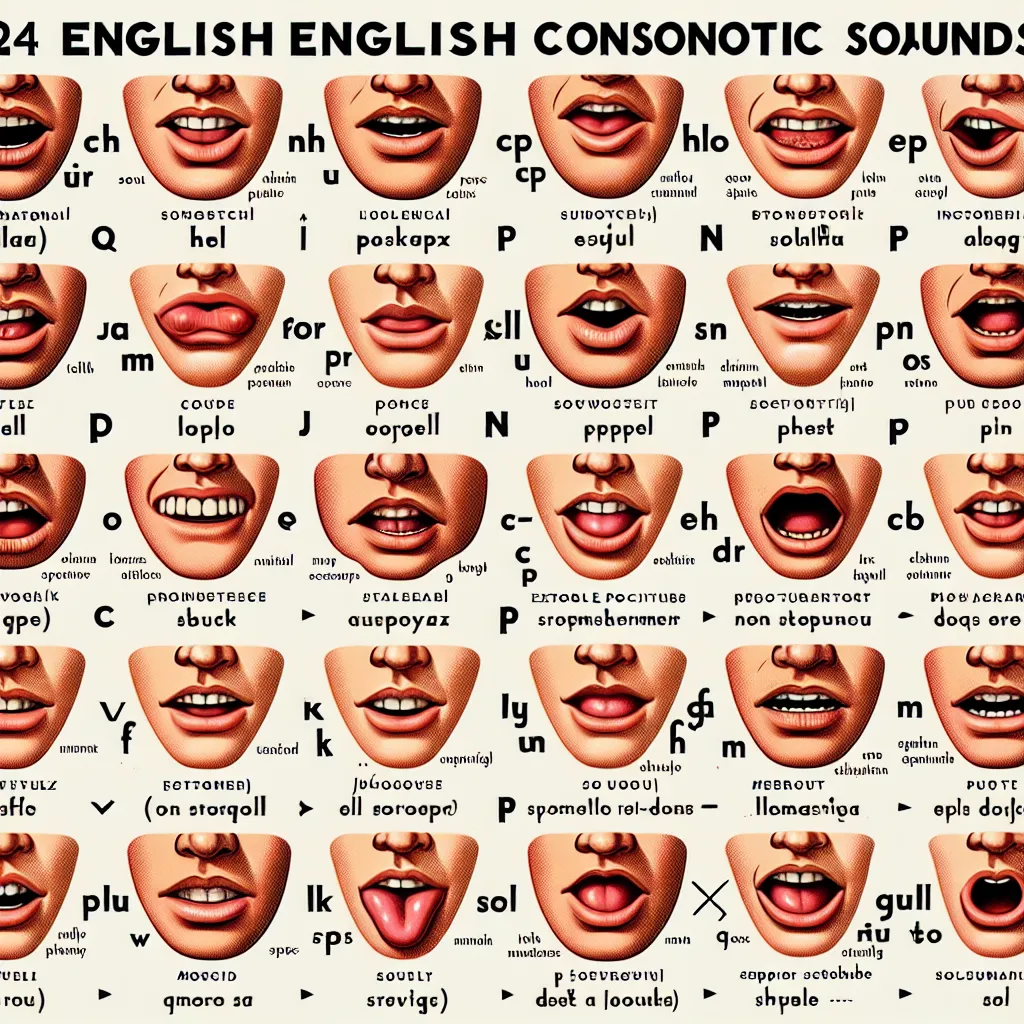English pronunciation can be challenging, especially when it comes to diphthongs. These complex vowel sounds play a crucial role in clear communication and can significantly impact your overall fluency. In this comprehensive guide, we’ll explore effective strategies to help you master the pronunciation of English diphthongs, enhancing your speaking skills and boosting your confidence.
 English Diphthongs Chart
English Diphthongs Chart
Understanding English Diphthongs
What are Diphthongs?
Diphthongs are vowel sounds that involve a smooth transition from one vowel sound to another within a single syllable. In English, there are eight common diphthongs:
- /eɪ/ as in “day”
- /aɪ/ as in “fly”
- /ɔɪ/ as in “boy”
- /aʊ/ as in “now”
- /əʊ/ as in “go”
- /ɪə/ as in “ear”
- /eə/ as in “air”
- /ʊə/ as in “pure”
Understanding these sounds is crucial for improving your English pronunciation and overall speaking skills.
Methods for Mastering Diphthong Pronunciation
1. Listen and Repeat
One of the most effective ways to improve your diphthong pronunciation is through active listening and repetition. Here’s how:
- Use reliable resources like pronunciation dictionaries or language learning apps.
- Listen carefully to native speakers pronouncing words with diphthongs.
- Repeat the sounds, focusing on the smooth transition between the two vowel sounds.
For example, practice saying “day” (/deɪ/) by starting with the /e/ sound and smoothly transitioning to the /ɪ/ sound.
2. Mirror Practice
Using a mirror can help you visualize the mouth movements required for proper diphthong pronunciation:
- Stand in front of a mirror.
- Pronounce words containing diphthongs slowly, paying attention to your lip and tongue movements.
- Compare your mouth shape to that of native speakers in instructional videos.
This technique is particularly useful for diphthongs like /aʊ/ in “now,” where you can clearly see the transition from an open mouth position to a rounded one.
3. Exaggeration Technique
Exaggerating the diphthong sounds can help you internalize the correct pronunciation:
- Start by pronouncing each part of the diphthong separately and exaggeratedly.
- Gradually speed up and smooth out the transition between the two sounds.
For instance, with the word “boy” (/bɔɪ/), begin by saying “baw-ee” slowly, then progressively blend the sounds until you achieve the correct diphthong.
4. Minimal Pair Practice
Minimal pairs are words that differ in only one sound. Practicing with minimal pairs can help you distinguish between similar diphthongs:
- Create lists of minimal pairs featuring diphthongs, such as “bite” (/aɪ/) and “boat” (/əʊ/).
- Practice pronouncing these pairs, focusing on the distinct sounds.
This method is particularly effective for differentiating between diphthongs like /eɪ/ and /aɪ/, as in “late” versus “light.”
Tips for Improving Diphthong Pronunciation
-
Focus on the transition: Remember that diphthongs are about the smooth movement from one vowel sound to another. Practice making this transition as seamless as possible.
-
Use phonetic transcriptions: Familiarize yourself with the International Phonetic Alphabet (IPA) to understand the exact sounds in each diphthong.
-
Record yourself: Make audio recordings of your pronunciation and compare them to native speaker examples. This can help you identify areas for improvement.
-
Practice with tongue twisters: Use tongue twisters that incorporate diphthongs to challenge your pronunciation skills. For example: “How now, brown cow?” focuses on the /aʊ/ diphthong.
-
Incorporate diphthongs into daily practice: Set aside time each day to focus specifically on diphthong pronunciation exercises.
Common Mistakes in Diphthong Pronunciation
-
Treating diphthongs as single sounds: Remember that each diphthong consists of two distinct vowel sounds blended together.
-
Overemphasizing one part of the diphthong: Ensure that both parts of the diphthong are given equal emphasis for a natural sound.
-
Mispronouncing similar diphthongs: Pay close attention to the subtle differences between similar diphthongs, such as /eɪ/ and /aɪ/.
-
Neglecting mouth positioning: Be mindful of your lip and tongue positions when pronouncing diphthongs, as these can significantly affect the sound produced.
-
Rushing the transition: Take your time to smoothly transition between the two vowel sounds in each diphthong.
Phonemic Chart and Commonly Mispronounced Words
Here’s a simplified phonemic chart focusing on diphthongs:
/eɪ/ – day, wait, pay
/aɪ/ – fly, high, tie
/ɔɪ/ – boy, toy, enjoy
/aʊ/ – now, how, down
/əʊ/ – go, show, know
/ɪə/ – ear, clear, fear
/eə/ – air, care, bear
/ʊə/ – pure, sure, cure
Ten words commonly mispronounced due to diphthong errors:
- Either (/ˈaɪðər/ or /ˈiːðər/)
- Height (/haɪt/)
- Choir (/kwaɪər/)
- Bouquet (/buːˈkeɪ/)
- Plough (/plaʊ/)
- Buoy (/bɔɪ/)
- Pneumonia (/njuːˈməʊniə/)
- Weird (/wɪərd/)
- Scour (/skaʊər/)
- Courage (/ˈkʌrɪdʒ/)
Practice these words regularly, paying close attention to the correct diphthong sounds.
Conclusion
Mastering the pronunciation of English diphthongs is a crucial step towards achieving fluency and clear communication. By understanding the nature of diphthongs, employing effective learning methods, and practicing regularly, you can significantly improve your pronunciation skills. Remember to be patient with yourself and celebrate your progress along the way.
For more tips on improving your English pronunciation, check out our related articles on how to improve pronunciation with detailed analysis and how to master English pronunciation with drills.
We encourage you to share your experiences and ask questions in the comments below. Happy learning!




